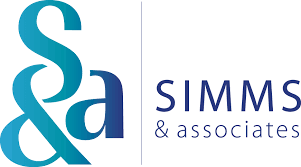As I sipped my morning chai latte today, a rather troubling statistic caught my eye. You may think that ‘quiet quitting’ is no longer a thing, but not only is it still around, nearly six in ten employees are ‘quiet quitting’. Yes, it seems that a significant number of people are still present in body but not quite there in spirit. They’re logged on but tuned out, missing a vital connection with their roles, colleagues, and the heart of the business itself. The cost? Over £7 trillion lost from the global economy. That’s right, trillion with a ‘T’.
But there’s another side to this story that we need to address: the rise of what’s being called ‘quiet managing’. According to recent studies, 34% of employees feel they have to guess at their workplace priorities, and 64% say they’re losing between one to two productive hours a day because they don’t have clear deadlines. Despite the best intentions, constant check-ins and endless meetings aren’t solving the problem. In fact, 70% of meetings crush productivity, and nearly half of employees feel micromanaged by the frequent interruptions. People want to be able to get on with their jobs, but also know exactly what’s expected of them in order to succeed.
The issue isn’t just about employees tuning out—it’s about them being overloaded, unsure of their priorities, and left guessing what’s actually important. As leaders, we must shift our focus from just keeping tabs on what our teams are doing to clearly setting expectations and providing the autonomy they need to succeed.
So, how do we ensure our team members are not just present but also engaged, inspired, and ready to innovate? The answer might just lie in the smart integration of technology. And that happens to be where my strengths and interests lie. ????
Embrace Flexibility Through Tech
The first port of call is leveraging technology to offer genuine flexibility. Tools that allow for seamless remote working or flexible hours can help teams manage their work-life balance better, boosting engagement. It’s not just about logging in from a beach (though that sounds lovely); it’s about creating an environment where our team can thrive, no matter where they are.
Enhance Communication
Ever felt out of the loop? It’s not a great feeling. Advanced communication tools that encourage more than just work talk can help bridge the gap between being a team in name only, and genuinely feeling like one. Think about platforms that facilitate both professional and casual interactions—where ideas and GIFs fly fast and free!
Real-time Feedback and Recognition
Sometimes, all it takes to feel engaged and valuedis a little nod—a digital thumbs-up for a job well done. Implementing systems that allow you to provide real-time feedback and recognition can revolutionise the traditional annual review process, making appreciation timely and more meaningful.
Gamification of Work Processes
Who said work can’t be fun? Gamifying work processes can invigorate the mundane parts of our jobs. It’s about adding elements of play to enhance productivity and engagement. Leaderboards, progress trackers, and rewards for milestones could bring out the inner gamer in everyone, making everyday tasks a bit more thrilling.
Training and Development Platforms
Growth is a huge motivator. By utilising e-learning platforms that allow team members to upskill at their pace, we are not only investing in their future but also engaging them through learning paths they are passionate about. This investment shows that the company bets big on their potential.
Foster a Culture of Collaboration
Finally, technology should be a bridge, not a barrier. Tools that enhance collaboration can help form the supportive bonds that quiet quitters are missing. Whether it’s project management software that enhances teamwork or virtual reality spaces that simulate a real office environment, tech can help us create a more inclusive and interactive workplace.
Cut Down on Meetings and Clarify Expectations
We also need to rethink how we manage our teams. Research shows that employees are often overloaded with unnecessary meetings and unclear priorities. To combat this, we must be intentional about setting clear goals and deadlines and minimise the frequency of meetings. Let’s ditch the constant check-ins and instead, focus on aligning our teams with the same objectives. This way, team members won’t have to guess what’s most important, and leaders can trust that the right tasks are being prioritised.
As leaders, our challenge is to ensure that our teams not only show up but shine brightly. The digital tools are there, but it’s our vision and strategy that will determine how well we utilise them to turn the tide on engagement.
Let’s not allow our workplaces to become haunted by the ghosts of quiet quitters. Instead, let’s use technology to bring a vibrant spirit back to work. The future of work isn’t just about where we work, but how engaged we are while we do it. And on that note, let’s get back to making magic happen, shall we?
Love, Amanda
